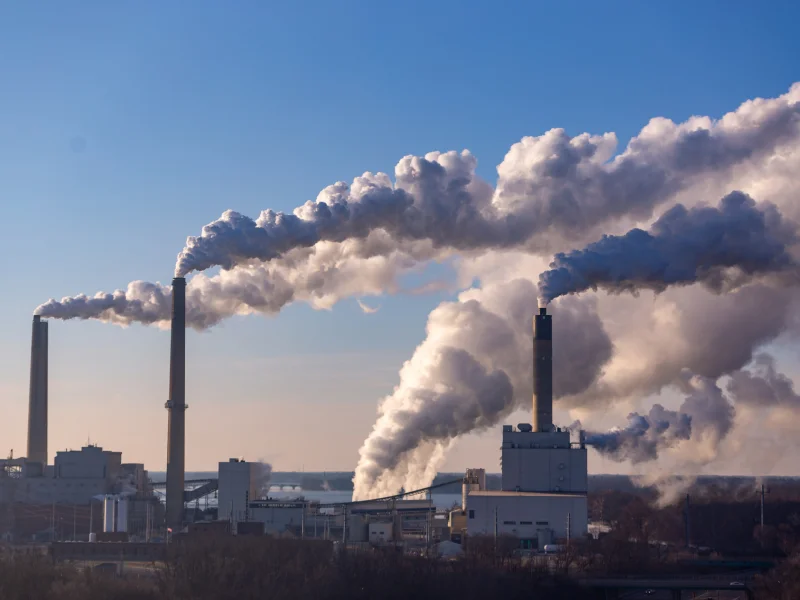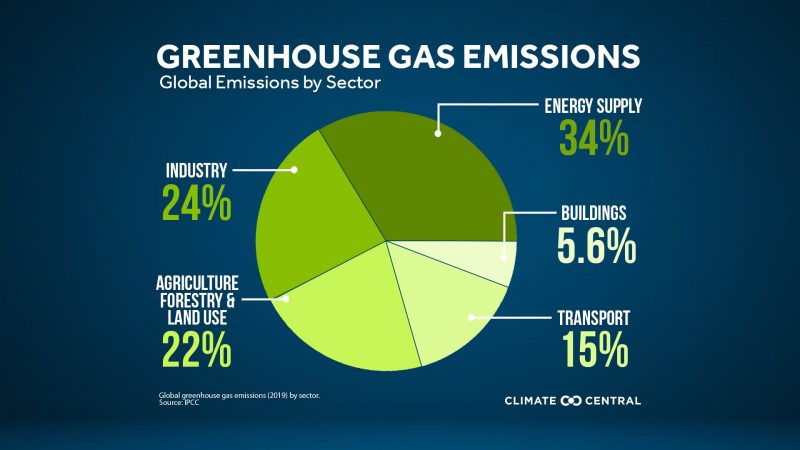Greenhouse gas emissions (GHGs) are a critical driver of global climate change. They trap heat in the Earth’s atmosphere, creating a warming effect that has far-reaching consequences for ecosystems, weather patterns, and human livelihoods. In this blog, we will delve into the causes, effects, and actionable solutions to address greenhouse gas emissions, with a focus on studies and efforts from national institutions and universities.
What Are Greenhouse Gases?
Greenhouse gases include carbon dioxide (CO₂), methane (CH₄), nitrous oxide (N₂O), and fluorinated gases. These gases trap heat in the atmosphere, forming a “greenhouse effect” that warms the planet. While some GHGs occur naturally, human activities have significantly increased their concentration, leading to unprecedented levels of global warming.

Major Causes of Greenhouse Gas Emissions
1. Fossil Fuel Combustion
Burning fossil fuels for energy is the largest source of CO₂ emissions globally. Power plants, industrial processes, and transportation heavily rely on coal, oil, and natural gas. A study by the U.S. Environmental Protection Agency (EPA) highlights that over 75% of U.S. GHG emissions come from energy-related activities.
2. Agriculture
Agricultural activities contribute significantly to methane and nitrous oxide emissions. Livestock digestion produces methane, while fertilizer use releases nitrous oxide. A report from the University of California, Davis, emphasizes that modern farming techniques could reduce these emissions by as much as 30%.
3. Deforestation
Forests act as carbon sinks, absorbing CO₂ from the atmosphere. However, deforestation for agriculture, urbanization, and logging releases stored carbon, contributing to global emissions. Studies from Harvard University reveal that reforestation projects can offset up to 25% of annual GHG emissions.
4. Industrial Processes
Cement production, chemical manufacturing, and waste treatment also release significant greenhouse gases. National-level studies from the National Renewable Energy Laboratory (NREL) indicate that adopting low-carbon industrial processes can drastically reduce emissions.

Effects of Greenhouse Gas Emissions
1. Climate Change
The Intergovernmental Panel on Climate Change (IPCC) reports that the Earth’s average temperature has risen by 1.1°C since the pre-industrial era due to increased GHG concentrations. This warming leads to more frequent heatwaves, hurricanes, and droughts.
2. Sea Level Rise
Melting glaciers and thermal expansion caused by warming oceans have resulted in rising sea levels. A study conducted by Princeton University predicts that global sea levels could rise by up to 1 meter by 2100, threatening coastal communities.
3. Ecosystem Disruption
Higher temperatures and altered precipitation patterns disrupt ecosystems, leading to habitat loss and species extinction. Research from Stanford University shows that coral reefs, which support 25% of marine life, are at risk of collapse due to ocean warming and acidification.
4. Public Health Risks
Air pollution from greenhouse gases exacerbates respiratory and cardiovascular diseases. The World Health Organization (WHO) estimates that 7 million deaths annually are linked to air pollution, making it a major public health challenge.
Solutions to Combat Greenhouse Gas Emissions
1. Transition to Renewable Energy
Switching to solar, wind, and hydroelectric power can drastically reduce CO₂ emissions. The National Renewable Energy Laboratory (NREL) found that renewable energy could meet 80% of the U.S. energy demand by 2050.
2. Energy Efficiency
Improving energy efficiency in buildings, vehicles, and appliances can significantly cut emissions. The Massachusetts Institute of Technology (MIT) has pioneered studies on energy-efficient technologies, showing their potential to reduce energy consumption by 50%.
3. Carbon Capture and Storage (CCS)
CCS technologies capture CO₂ emissions from industrial processes and store them underground. The University of Texas at Austin’s carbon capture project has successfully sequestered over 5 million metric tons of CO₂, demonstrating the technology’s viability.
4. Sustainable Agriculture
Promoting practices such as crop rotation, precision farming, and organic agriculture can reduce methane and nitrous oxide emissions. Cornell University’s research shows that sustainable farming practices can increase soil carbon storage by 40%.
5. Reforestation and Afforestation
Planting trees and restoring degraded forests can absorb CO₂ from the atmosphere. A global study led by ETH Zurich estimates that large-scale reforestation could remove up to 200 gigatons of CO₂ from the atmosphere.
6. Policy and Legislation
Governments play a critical role in reducing emissions through policies and regulations. The Paris Agreement, adopted by 196 countries, aims to limit global warming to below 2°C. National policies, such as carbon pricing and emissions trading schemes, incentivize businesses to adopt greener practices.
The Role of Individuals
While systemic changes are essential, individual actions also matter. Reducing energy consumption, using public transportation, adopting plant-based diets, and supporting sustainable brands are small yet impactful steps everyone can take.
